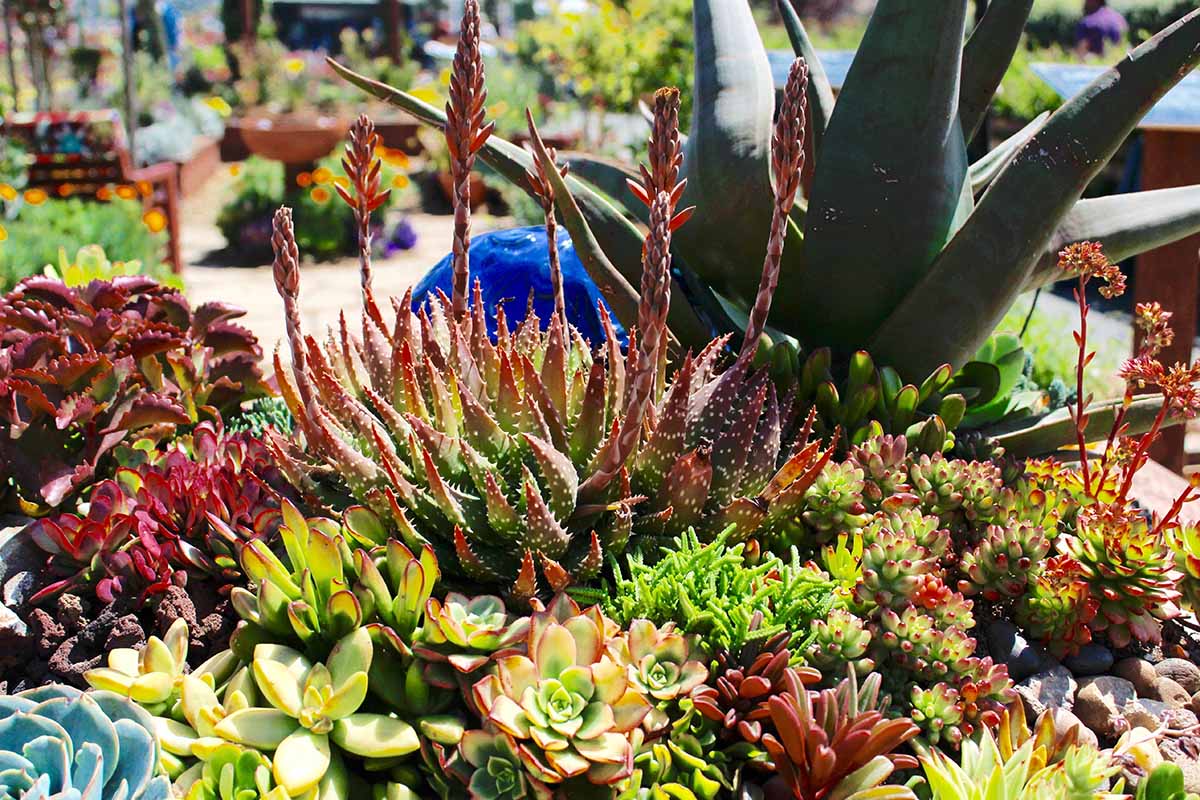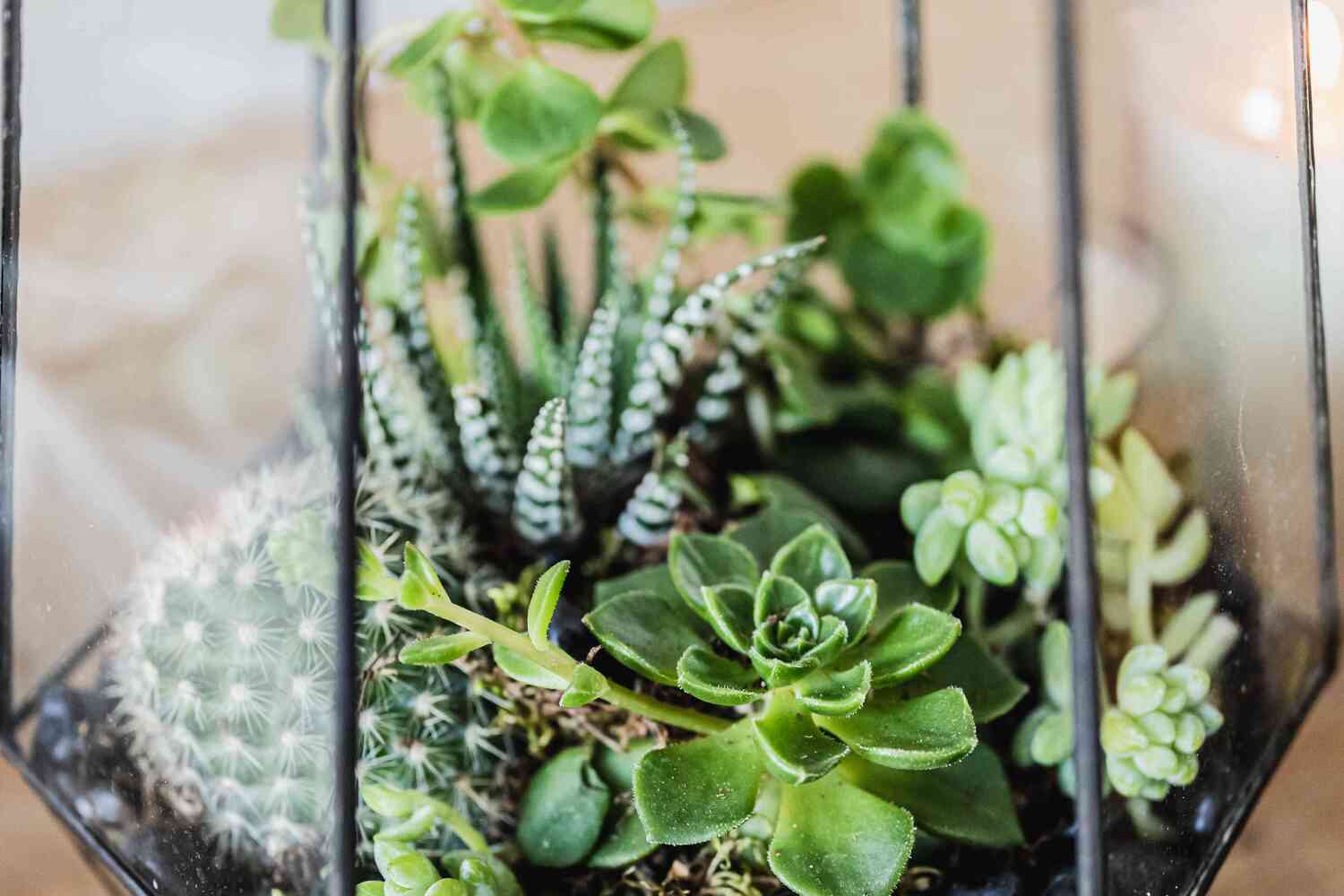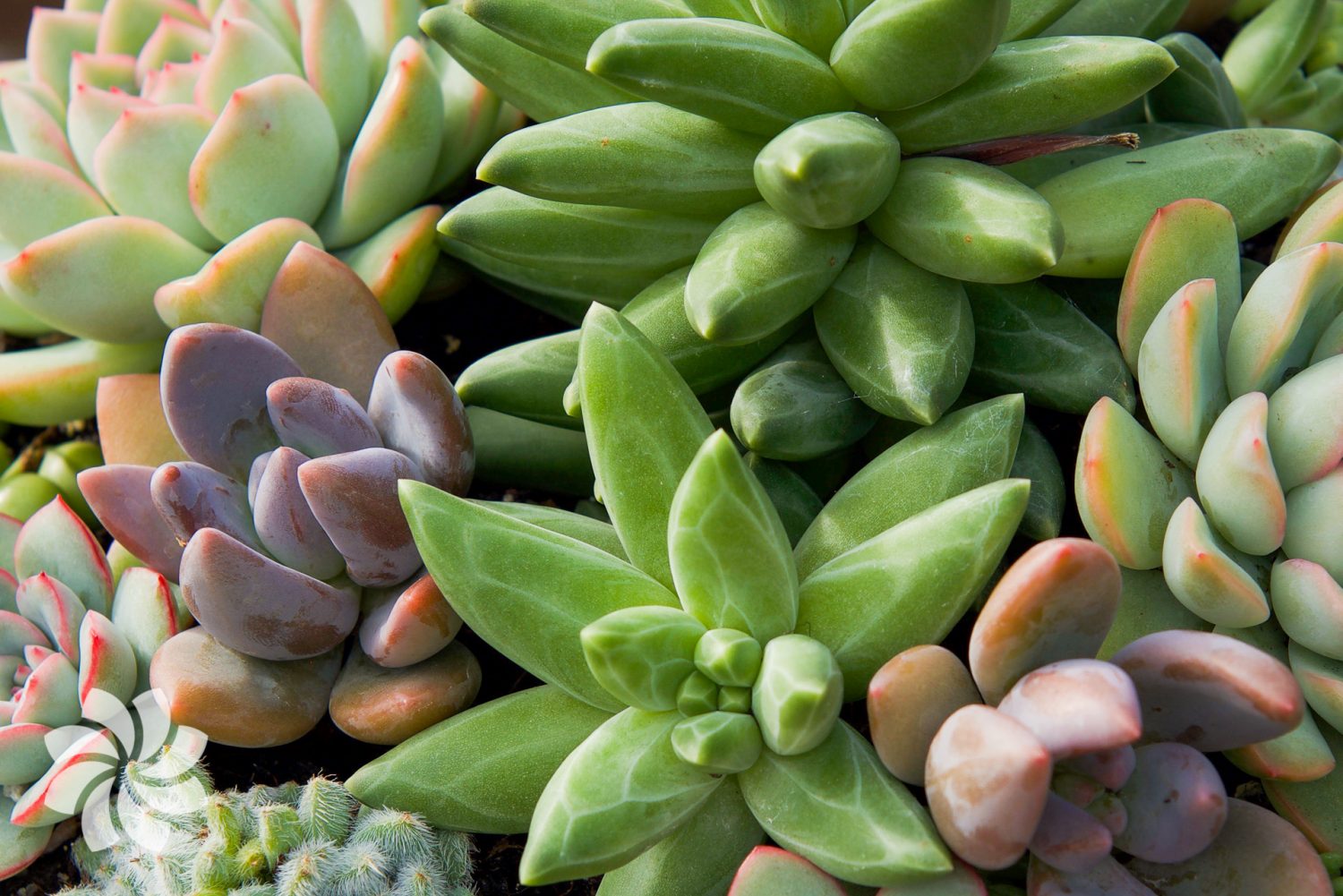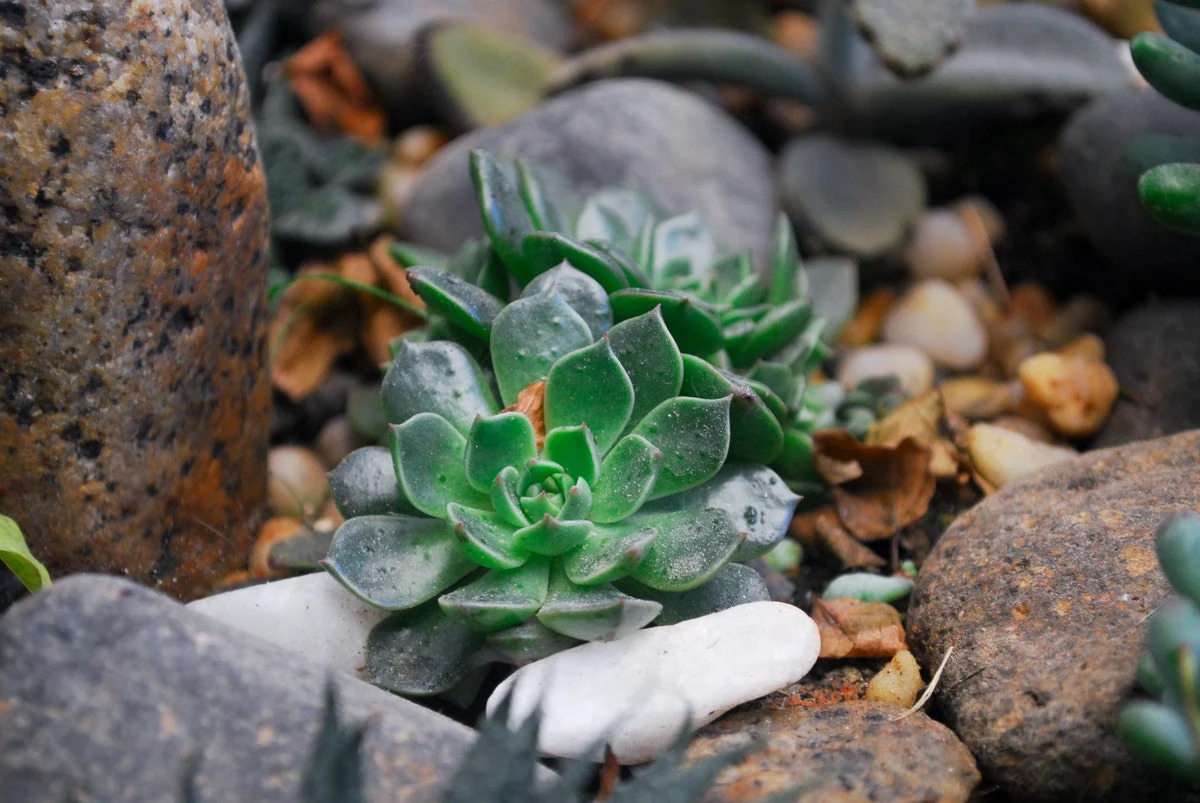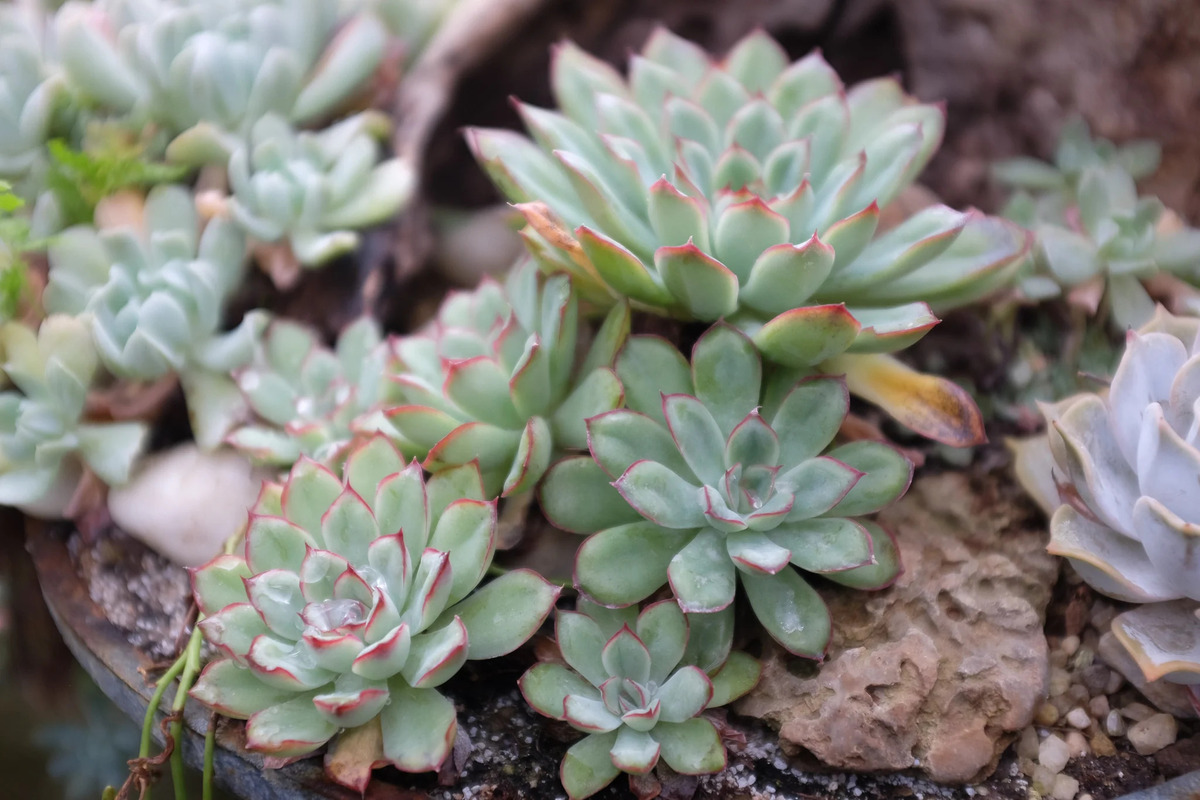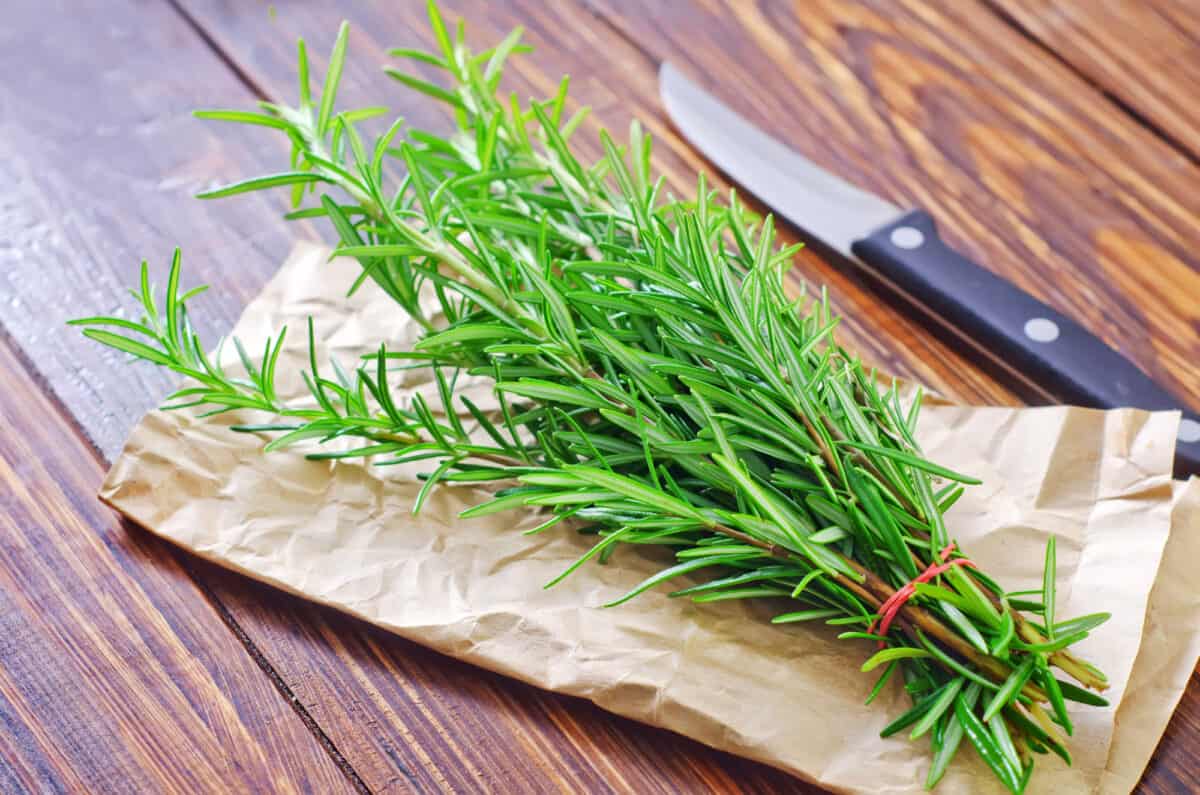Home>Types of Gardening>Ornamental Gardening>How To Plant Succulents From Leaves
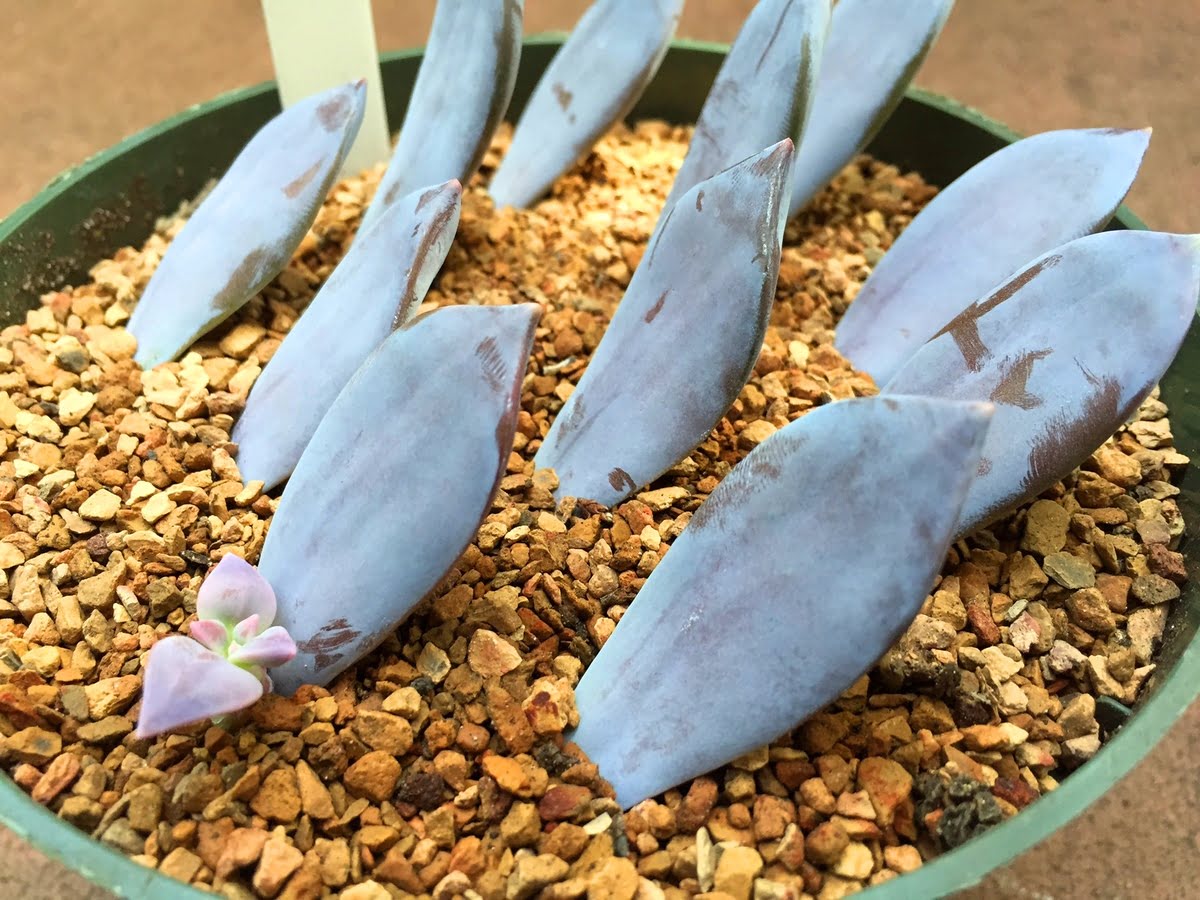

Ornamental Gardening
How To Plant Succulents From Leaves
Modified: February 9, 2024
Learn the art of ornamental gardening with our step-by-step guide on how to plant succulents from leaves. Transform your garden with these beautiful and low-maintenance plants!
(Many of the links in this article redirect to a specific reviewed product. Your purchase of these products through affiliate links helps to generate commission for Chicagolandgardening.com, at no extra cost. Learn more)
Table of Contents
Introduction
Ornamental gardening can be a fulfilling and rewarding hobby, allowing you to create beautiful and vibrant displays in your outdoor space. One popular aspect of ornamental gardening is growing succulents, which are known for their unique shapes, colors, and drought-tolerant nature. If you’ve ever wanted to learn how to plant succulents from leaves, you’re in luck! This article will guide you through the process, providing valuable tips and insights to help you successfully propagate new succulents.
Succulents are a type of plant that store water in their leaves, stems, or roots. They come in various shapes and sizes, from rosettes to trailing vines, and can add a touch of beauty and character to any garden or indoor space. While you can purchase fully grown succulents from nurseries or garden centers, growing them from leaves is a cost-effective and rewarding way to expand your succulent collection.
Propagation through leaf cuttings is a common method used by succulent enthusiasts to grow new plants. It involves taking a healthy leaf from an existing succulent, allowing it to callous, and then planting it in well-draining soil. With proper care and patience, the leaf will sprout roots and eventually develop into a new succulent plant.
In this article, we will walk you through the step-by-step process of planting succulents from leaves, from selecting the right leaves to caring for the newly planted cuttings. Get ready to embark on a journey of plant propagation and watch as your succulent garden grows and flourishes! Let’s jump right in!
Materials Needed
Before you start planting succulents from leaves, it’s important to gather all the necessary materials. Having everything prepared in advance will make the process smoother and more convenient. Here are the materials you will need:
- Succulent leaves: Choose healthy leaves from mature succulent plants. Look for leaves that are plump and free from damage or signs of disease.
- Sharp clean scissors or pruning shears: You’ll need a tool to carefully cut the leaves from the parent plant without causing any damage.
- Well-draining soil: Succulents prefer soil that drains well and does not retain excessive moisture. You can either purchase a commercial succulent potting mix or create your own by combining equal parts of regular potting soil, sand, and perlite.
- Pots or containers: Choose small pots or containers with drainage holes. This will prevent water from pooling at the bottom and causing root rot.
- Misting bottle or spray bottle: Succulent leaves need to be misted periodically to provide them with moisture without saturating the soil.
- Plastic wrap or a clear plastic bag: Using plastic wrap or a plastic bag can help create a humid environment around the newly planted leaves, which promotes root development.
- Water: While succulents are drought-tolerant, they still need occasional watering. Be sure to have a source of water handy for when your new cuttings need a drink.
- Indirect sunlight: Succulents thrive in bright light but can scorch in direct sunlight. Find a location with indirect sunlight for your new plantings.
By gathering these materials, you’ll be well-prepared to start planting succulents from leaves. Remember to maintain cleanliness throughout the process to prevent the spread of diseases or pests. Now that you have everything ready, let’s move on to the next step: selecting healthy succulent leaves.
Selecting Healthy Succulent Leaves
When it comes to propagating succulents from leaves, selecting healthy leaves is crucial for successful growth. Here are some tips to help you choose the right leaves for propagation:
- Choose mature leaves: Look for leaves that are fully developed and mature. Leaves that are too young may not have enough stored energy to produce new growth.
- Opt for plump leaves: Select leaves that are plump and firm. These leaves are usually healthier and have a higher chance of successfully propagating.
- Avoid damaged leaves: Steer clear of leaves with blemishes, rot, or signs of disease. Damaged leaves are less likely to successfully grow into new plants.
- Look for leaves with a clean break: When removing leaves from the parent plant, try to select leaves that have a clean break. This means that the leaf naturally separates from the stem without any tearing or damage.
- Check for leaf nodes: Leaf nodes are the small bumps or protrusions on the back of a succulent leaf. These nodes are where new roots and shoots will emerge. Make sure the leaves you choose have visible and healthy leaf nodes.
It’s also important to consider the variety of succulent you’re working with. Different species have different propagation methods and success rates. Some succulents, like Echeveria or Sedum, are particularly easy to propagate from leaves, while others may require more specific conditions.
Remember to only collect a few leaves from each succulent plant to avoid weakening the parent plant. The choice of leaves is crucial, as healthy leaves have a higher chance of successfully rooting and growing into new plants. Once you have selected the perfect leaves, it’s time to prepare the soil for planting.
Preparing the Soil
A key factor in successfully propagating succulents from leaves is using well-draining soil. Succulents are adapted to arid environments and can suffer from root rot if exposed to excess moisture. Here’s how to prepare the soil for planting your succulent leaves:
- Choose the right potting mix: Use a commercial succulent potting mix or create your own by mixing equal parts of regular potting soil, sand, and perlite. This combination provides the ideal balance of moisture retention and drainage.
- Sterilize the soil: If you’re using garden soil, it’s important to sterilize it to eliminate any pests or diseases. Bake the soil in an oven at 180°F (82°C) for 30 minutes, or place it in a microwave-safe container and heat it for five minutes. Allow the soil to cool before using it.
- Ensure proper drainage: Before planting, make sure your pots or containers have drainage holes at the bottom. This prevents water from pooling and causing root rot.
- Consider adding a layer of gravel: To enhance drainage even further, you can place a layer of gravel or small rocks at the bottom of the pot before adding the soil. This helps excess water to flow out more efficiently.
Properly preparing the soil sets the foundation for healthy root development and overall plant growth. Once you have prepared the soil, you’re ready to move on to the next step: removing the leaf from the parent succulent.
Removing the Leaf from the Succulent
Now that you have selected healthy succulent leaves and prepared the soil, it’s time to remove the leaf from the parent plant. Follow these steps for a successful removal process:
- Choose a healthy stem: Look for a healthy stem or branch from which to remove the leaf. Select a stem that is mature and well-established.
- Sanitize your scissors or pruning shears: Before making any cuts, sanitize your scissors or pruning shears with rubbing alcohol or a solution of 1 part bleach to 9 parts water. This helps prevent the spread of diseases or pests between plants.
- Cut the leaf at its base: Using the sanitized tool, make a clean cut at the base of the leaf, as close to the stem as possible. Be careful not to damage the stem or other leaves in the process.
- Remove excess foliage: If you have multiple leaves on a single stem, remove any excess foliage, leaving only the healthy leaves that you plan to propagate.
It’s important to handle the leaves with care to avoid damaging them. Always remember to sanitize your cutting tools before and after each use to maintain cleanliness and prevent the spread of diseases.
Once you have successfully removed the leaf from the parent succulent, the next step is to allow the leaf to callous before planting it in soil. This callousing process is crucial for successful root development, and we will discuss it in the next section.
Allowing the Leaf to Callous
After removing the leaf from the parent succulent, it’s important to allow the leaf to callous before planting it in soil. Callousing is the process of forming a dry, protective layer over the cut end of the leaf. This layer helps prevent the leaf from rotting once it is planted. Follow these steps to allow the leaf to callous:
- Place the leaf in a shaded area: Find a spot with indirect sunlight where you can place the leaf. Direct sunlight can cause the leaf to dry out too quickly, hindering the callousing process.
- Let the leaf sit for a few days to a week: It usually takes a few days to a week for the cut end of the leaf to callous over. During this time, avoid watering the leaf or exposing it to excessive moisture.
- Check for callousing: After the designated time period, gently touch the cut end of the leaf. If it feels dry and appears to have formed a protective layer, it is ready to be planted. If it is still soft or moist, give it more time to callous.
It’s important to note that not all succulents require callousing. Some species, such as snake plants (Sansevieria) or jade plants (Crassula), can be planted directly into soil after cutting, without the need for callousing. However, for most succulent varieties, allowing the leaf to callous increases the chances of successful propagation.
Once the leaf has developed a calloused end, it’s time to plant it in soil. In the next section, we will discuss the process of planting the leaf and caring for the newly planted succulent cuttings.
Planting the Leaf in Soil
Now that the succulent leaf has calloused, it’s time to plant it in soil. Follow these steps to ensure successful planting of the leaf cutting:
- Choose a well-draining pot or container: Select a small pot or container with drainage holes at the bottom. This will prevent water from pooling and causing root rot.
- Fill the pot with well-draining soil: Fill the pot about three-quarters full with the well-draining succulent potting mix or a mix of potting soil, sand, and perlite.
- Make a small hole in the soil: Use your finger or a tool to make a small hole in the center of the soil, deep enough to accommodate the cut end of the leaf.
- Place the leaf in the hole: Gently place the calloused end of the leaf into the hole so that it is partially buried in the soil. Make sure the leaf is stable and upright.
- Backfill the hole: Carefully backfill the hole with additional soil, lightly patting it down to secure the leaf in place. Avoid pressing too hard, as succulents prefer loose soil.
- Water sparingly: After planting, give the leaf cutting a small amount of water, enough to moisten the soil but not saturate it. Succulent leaves do not require much water at this stage, as they primarily rely on stored energy to develop roots.
- Place in indirect sunlight: Find a location with bright, indirect sunlight for your newly planted succulent leaf. Avoid placing it in direct sunlight, as this may cause the leaf to burn or dry out.
It’s important to note that the leaf cutting may not immediately develop roots or new growth. Rooting can take several weeks to months, depending on the succulent species and environmental factors. Be patient and keep providing the right conditions for your succulent to thrive.
In the next section, we will discuss the care needed for newly planted succulent leaves to ensure their successful growth and development.
Caring for Newly Planted Succulent Leaves
Proper care is essential for the successful growth and development of newly planted succulent leaves. Follow these guidelines to ensure your succulents thrive:
- Water sparingly: Succulent leaves do not require frequent watering. Water the soil sparingly, allowing it to dry out completely between waterings. Overwatering can lead to root rot and other issues.
- Provide indirect sunlight: Place your succulent leaf cuttings in a location with bright, indirect sunlight. This will provide the necessary light for photosynthesis without causing sunburn or damage.
- Avoid extreme temperatures: Succulents prefer temperatures between 60°F (15°C) and 80°F (27°C). Protect them from extreme heat or cold, as sudden temperature changes can be detrimental.
- Mist the leaves: Succulent leaves appreciate a light misting of water. Use a spray bottle to mist the leaves occasionally, providing them with a bit of moisture. Be careful not to oversaturate the soil.
- Monitor for root and stem growth: Keep an eye on the base of the leaf where it meets the soil. Over time, you may notice tiny roots emerging from the calloused end and new stem growth. This indicates that the leaf is successfully establishing itself.
- Be patient: Succulent propagation takes time, and it may take several weeks to see significant growth. Be patient and continue to care for your leaf cuttings, providing the right environment and conditions.
Remember, every succulent species is unique, and their care requirements may differ. Research the specific succulent variety you are propagating to ensure you are providing the correct care and conditions.
With proper care, your newly planted succulent leaves will take root and grow into healthy, independent plants. Continue to monitor their progress and adjust care as needed. In the next section, we will discuss the importance of patience and growth in the propagation process.
Patience and Growth
When it comes to propagating succulents from leaves, patience is key. It’s important to remember that the process of rooting and growth takes time. Here are some insights to keep in mind:
Root development: After planting the leaf cutting, it may take several weeks or even months for roots to form. Don’t be discouraged if you don’t see immediate growth. Succulents have a slow growth rate, and root development is a gradual process.
New growth: Once the leaf has established roots, you may start to see new growth emerging from the stem or the center of the rosette. This is a positive sign and an indication that the plant is thriving. Keep providing the necessary care to promote further growth.
Potential setbacks: It’s important to be prepared for possible setbacks along the way. Some leaf cuttings may not produce roots or new growth, and it’s normal for a few cuttings to fail. Don’t be discouraged by these setbacks – it’s all part of the learning process. Keep experimenting and refining your techniques.
Gradual growth: Succulents have a slow growth rate, especially when propagated from leaves. It may take months or even years for a small leaf cutting to develop into a mature, fully grown plant. Embrace the gradual growth and enjoy the journey as your succulent collection expands over time.
Learn and adapt: As you continue propagating succulents from leaves, you’ll gain valuable knowledge and insights along the way. Each plant is unique, and experimentation is key to understanding the specific needs of different succulent species. Learn from your experiences and apply that knowledge to improve your propagation techniques.
In summary, don’t rush the process of succulent propagation. Patience is essential, and with time, you will witness the growth and development of your newly planted succulents. Enjoy the process and celebrate every small milestone along the way.
Now that you have learned about the importance of patience and growth, you are equipped with the knowledge and guidance to successfully propagate succulents from leaves. So, roll up your sleeves, get your hands dirty, and embark on this rewarding journey of succulent propagation!
Conclusion
Propagating succulents from leaves is a fascinating and rewarding way to expand your succulent collection. With the right materials, proper care, and a dash of patience, you can successfully grow new succulent plants from healthy leaves.
Remember to start by selecting mature and healthy leaves, ensuring they have calloused before planting them in well-draining soil. Provide the right amount of water, light, and temperature for your newly planted succulent leaves. Mist the leaves occasionally and monitor for root and stem growth.
Throughout the propagation process, it’s important to remain patient and embrace the slow growth of succulents. Some leaf cuttings may not succeed, but don’t be discouraged. Every setback is an opportunity to learn and improve your techniques.
By fostering a love for ornamental gardening and succulent propagation, you can create a stunning collection of unique and vibrant succulents. Enjoy the process, experiment with different varieties, and watch as your succulent garden flourishes and brings joy to your outdoor space or indoor environment.
So go ahead, embark on this exciting journey of propagating succulents from leaves, and let your creativity and green thumb shine!

